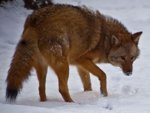Bonsai Nut
Nuttier than your average Nut
On this site we have some confusion about the difference between species, variety and cultivar, so I thought I would post a quick reference on taxonomic rank.
Taxonomy is the science of classifying organisms. Taxonomic rank (or hierarchy) is simply the most efficient way that has been developed to date to classify / name all living creatures. Most people are familiar with the taxonomic ranking scale: Kingdom / Phylum / Class / Order / Family / Genus / Species. This article deals with the lowest level of this scale - species - and additional classification below the species level that applies specifically to plants (organisms in the "Plantae" Kingdom).
SPECIES
The lowest level of classification, species is defined as the largest group of organisms that are so genetically similar that they can reproduce and produce fertile offspring. There are exceptions to this rule, but for the purposes of this article we will skip over them. It is really important to understand that when talking about plants, species BREED TRUE (or in the case of plants, the term "seed true" is also used). What that means is that if you have two parent plants that produce seeds, the seedlings will belong to the same species. When discussing plants, we may refer to them by their common name "Chinese elm" or their binomial (or Latin) name Ulmus parvifolia. Latin names are made up of two words - the GENUS name and the SPECIES name of the organism. In the example of Ulmus parvifolia, Ulmus identifies the elm genus, and parvifolia identifies it as a Chinese elm.
When trying to be specific, it is best to use Latin names, because they are unique to the species. Common names are vague, inexact, and can sometimes refer to more than one species, and sometimes one species can have more than one common name. Additionally, all languages / countries use the same Latin names. Common names often differ by language or location.
When writing a Latin name, the genus name is capitalized, and the species name is not. The name is italicized. It can be abbreviated with one letter of the genus (U. parvifolia). When referring to all members of a genus, it is common to see the term "species" abbreviated and used with the genus name: Ulmus sp. (meaning one type of elm) or Ulmus spp. (meaning several types of elms). Enough about typing...
SUBSPECIES and VARIETY
Subspecies and variety are one level lower on the taxonomic scale. All members of a subspecies or variety belong to the same SPECIES, and they can breed with other members of the species whether those individuals belong to the subspecies or not. The traits that make subspecies and variety members unique are genetically inheritable - ie they SEED TRUE when two individuals of the same subspecies or variety produce offspring.
SUBSPECIES are a specific group of individuals that all share a common trait (or traits) different from the species members at large, and are usually limited to a specific geographic area.
VARIETY are a specific group of individuals that all share a common trait (or traits) different from the species members at large, and are NOT limited to a specific geographic area.
Subspecies and variety are indicated by the abbreviations "subsp." or "var." in their Latin names. For example: Acer buergerianum var. formosanum, or Acer pictum subsp. mono.
A practical example of variety might be if one type of flower found in the wild usually has white flowers, but occasionally is found with blue flowers, and if you breed two blue flowers together all of the seeds produce plants with blue flowers. A practical example of subspecies might be if one type of flower in the wild has white flowers, but on one island in the Pacific it only has blue flowers. All of these flowers only produce blue flower offspring.
Varieties can sometimes be man-made via selective breeding. These varieties differ from cultivars because they seed true and their offspring maintain the desirable characteristics of the parent plants.
CULTIVAR
The easiest way to think about cultivars is (1) they are man-made and do not occur in nature and (2) they do not seed true - and must be cultivated via cutting, graft or other clonal method. Cultivars are plants that have been selectively propagated for desirable characteristics, like prettier flowers, larger fruit, disease resistance, etc. In some cases the plants may not even be fertile, though in other cases they may be fertile and produce offspring more or less similar to the cultivar holotype (but not the same). In current times, cultivars can represent valuable intellectual property for the individual or organization that created them - think of Monsanto, Round-Up herbicide, and their line of Round-Up resistant food crop cultivars.
Cultivars are indicated by single quotes in the Latin name, and the cultivar name is not italicized. For example: Ulmus americana 'New Harmony' or Ulmus americana 'Jefferson' - two American elm cultivars that are resistant to Dutch elm disease.
Because cultivars are maintained via clonal reproduction, all offspring are genetically identical to the original holotype. All Valencia orange trees, for example, are genetically identical to the first original Valencia orange. If you took a seed from a Valencia orange tree, planted it, and got a tree to grow, that tree would not be considered a Valencia orange, though it might have many/most of the characteristics of one. This is particularly the case when you consider cultivars of genetically variable genera like Ulmus or Acer, or situations where it might be difficult to identify both parent trees.
Discuss
Taxonomy is the science of classifying organisms. Taxonomic rank (or hierarchy) is simply the most efficient way that has been developed to date to classify / name all living creatures. Most people are familiar with the taxonomic ranking scale: Kingdom / Phylum / Class / Order / Family / Genus / Species. This article deals with the lowest level of this scale - species - and additional classification below the species level that applies specifically to plants (organisms in the "Plantae" Kingdom).
SPECIES
The lowest level of classification, species is defined as the largest group of organisms that are so genetically similar that they can reproduce and produce fertile offspring. There are exceptions to this rule, but for the purposes of this article we will skip over them. It is really important to understand that when talking about plants, species BREED TRUE (or in the case of plants, the term "seed true" is also used). What that means is that if you have two parent plants that produce seeds, the seedlings will belong to the same species. When discussing plants, we may refer to them by their common name "Chinese elm" or their binomial (or Latin) name Ulmus parvifolia. Latin names are made up of two words - the GENUS name and the SPECIES name of the organism. In the example of Ulmus parvifolia, Ulmus identifies the elm genus, and parvifolia identifies it as a Chinese elm.
When trying to be specific, it is best to use Latin names, because they are unique to the species. Common names are vague, inexact, and can sometimes refer to more than one species, and sometimes one species can have more than one common name. Additionally, all languages / countries use the same Latin names. Common names often differ by language or location.
When writing a Latin name, the genus name is capitalized, and the species name is not. The name is italicized. It can be abbreviated with one letter of the genus (U. parvifolia). When referring to all members of a genus, it is common to see the term "species" abbreviated and used with the genus name: Ulmus sp. (meaning one type of elm) or Ulmus spp. (meaning several types of elms). Enough about typing...
SUBSPECIES and VARIETY
Subspecies and variety are one level lower on the taxonomic scale. All members of a subspecies or variety belong to the same SPECIES, and they can breed with other members of the species whether those individuals belong to the subspecies or not. The traits that make subspecies and variety members unique are genetically inheritable - ie they SEED TRUE when two individuals of the same subspecies or variety produce offspring.
SUBSPECIES are a specific group of individuals that all share a common trait (or traits) different from the species members at large, and are usually limited to a specific geographic area.
VARIETY are a specific group of individuals that all share a common trait (or traits) different from the species members at large, and are NOT limited to a specific geographic area.
Subspecies and variety are indicated by the abbreviations "subsp." or "var." in their Latin names. For example: Acer buergerianum var. formosanum, or Acer pictum subsp. mono.
A practical example of variety might be if one type of flower found in the wild usually has white flowers, but occasionally is found with blue flowers, and if you breed two blue flowers together all of the seeds produce plants with blue flowers. A practical example of subspecies might be if one type of flower in the wild has white flowers, but on one island in the Pacific it only has blue flowers. All of these flowers only produce blue flower offspring.
Varieties can sometimes be man-made via selective breeding. These varieties differ from cultivars because they seed true and their offspring maintain the desirable characteristics of the parent plants.
CULTIVAR
The easiest way to think about cultivars is (1) they are man-made and do not occur in nature and (2) they do not seed true - and must be cultivated via cutting, graft or other clonal method. Cultivars are plants that have been selectively propagated for desirable characteristics, like prettier flowers, larger fruit, disease resistance, etc. In some cases the plants may not even be fertile, though in other cases they may be fertile and produce offspring more or less similar to the cultivar holotype (but not the same). In current times, cultivars can represent valuable intellectual property for the individual or organization that created them - think of Monsanto, Round-Up herbicide, and their line of Round-Up resistant food crop cultivars.
Cultivars are indicated by single quotes in the Latin name, and the cultivar name is not italicized. For example: Ulmus americana 'New Harmony' or Ulmus americana 'Jefferson' - two American elm cultivars that are resistant to Dutch elm disease.
Because cultivars are maintained via clonal reproduction, all offspring are genetically identical to the original holotype. All Valencia orange trees, for example, are genetically identical to the first original Valencia orange. If you took a seed from a Valencia orange tree, planted it, and got a tree to grow, that tree would not be considered a Valencia orange, though it might have many/most of the characteristics of one. This is particularly the case when you consider cultivars of genetically variable genera like Ulmus or Acer, or situations where it might be difficult to identify both parent trees.
Discuss
Last edited:








